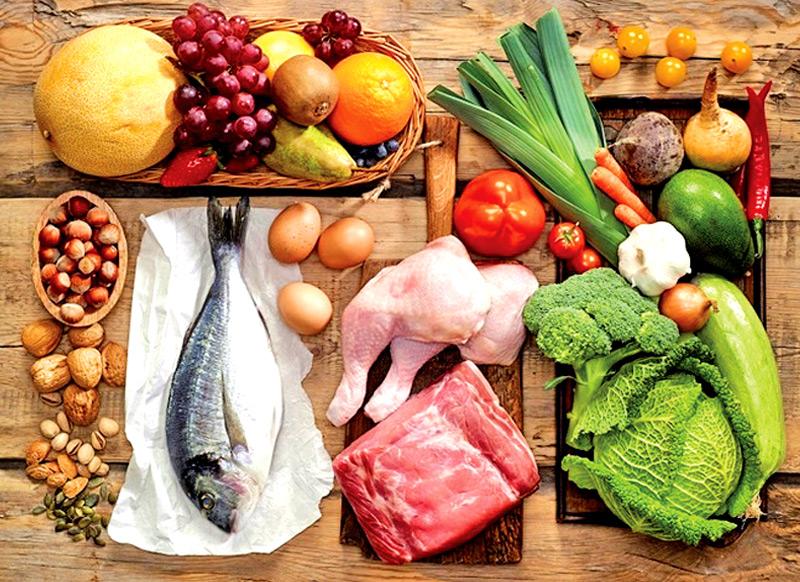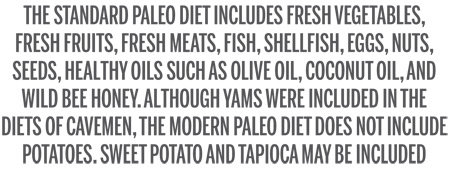
 Many are obsessed with shredding excess body fat to look attractive and be healthy. Modern fitness and nutrition experts have introduced various types of diets such as Keto and Paleo diets to support their endeavour. Although such diets are highly effective if they are followed in a correct and guided manner, they are not without negative health impacts if practised for an elongated period.
Many are obsessed with shredding excess body fat to look attractive and be healthy. Modern fitness and nutrition experts have introduced various types of diets such as Keto and Paleo diets to support their endeavour. Although such diets are highly effective if they are followed in a correct and guided manner, they are not without negative health impacts if practised for an elongated period.
Themodern Paleo diet was introduced by Professor Loren Cordain who had embarked on a vast gamut of research to develop a healthy diet. Professor Cordain subsequently came up with a diet that is rich in fresh vegetables and fruits, lean meat, fish, shellfish, grass-fed meats, free-range egg and poultry, and nuts while excluding the popular processed food that contains refined flour, refined sugar, trans-fat, salt, chemicals, and toxins. The Paleo diet is also said to have a low glycemic index.
Paleo diet
The Paleo diet or the Paleolithic diet, which is also known as the caveman diet or stone-age diet focuses on adopting an eating pattern similar to that of the diet of people of the stone age. Stone age people lived two million years ago and had a hunter-gatherer lifestyle. They used elementary chipped stone tools for hunting animals and gathering wild plant substances. The advocates of the Paleo diet suggest that eating foods similar to the food eaten by people of stone-age promotes health and fitness.
Historical evidence shows that cavemen ate meat, produce, and nuts. Modern foods such as milk and dairy products, whole grains, food rich in sugar, oil, and salt, processed food were not available in that era. Archaeologists and anthropologists opine that people of the Paleolithic era had been healthy and had lived long.
The reason for that is believed to have been their unsophisticated eating pattern and active lifestyle. It can also be believed that cavemen had experienced good health and longevity with no modern-day non-communicable diseases such as diabetes, cardiovascular diseases, and cancer due to the intake of lean meat, fish, nuts, and plant-based foods. Their active lifestyle that involved a high level of physical activity for hunting is believed to have contributed to a healthy and long life.
 The dawn of the agriculture era 10,000 or 12,000 years ago changed the way our ancient ancestors lived and their dietary patterns faced a transformation too. The Neolithic revolution kept a full stop to the hunter-gatherer lifestyle and paved the way for permeant settlements and a regular and assured supply of food. Whole grains, some vegetables and fruits, and dairy were among the new additions.
The dawn of the agriculture era 10,000 or 12,000 years ago changed the way our ancient ancestors lived and their dietary patterns faced a transformation too. The Neolithic revolution kept a full stop to the hunter-gatherer lifestyle and paved the way for permeant settlements and a regular and assured supply of food. Whole grains, some vegetables and fruits, and dairy were among the new additions.
Examples
The standard Paleo diet includes fresh vegetables, fresh fruits, fresh meats, fish, shellfish, eggs, nuts, seeds, healthy oils such as olive oil, coconut oil, and wild bee honey. Although yams were included in the diets of cavemen, the modern paleo diet does not include potatoes. Sweet potato and tapioca may be included.
What foods are excluded from a paleo diet? Processed food and food containing a large amount of refined sugars, oils, salt, trans fat, and chemicals are not included in a paleo diet. Apart from that whole grains, cereals, refined grains, sugars, dairy products, legumes are not recommended to be consumed.
The diet of Veddahs
The Veddahs of Sri Lanka, the aboriginals, and the true cavepeople of this land are known to have adopted a paleo diet for millennia.
In a conversation on the traditional diet of the indigenous people of Sri Lanka, Veddah chief Uruvarige Vannilaththo said that the community had been depending more on hunted meat, yams, nuts, fish, pure wild bee honey, and other edible wild substances.
“Our ancestors, the Veddahs lived in the lap of the jungle. They survived mainly on wild food. Our people ate a diet rich in meat. Meats of herbivorous animals such as deer, stag, wild boar, rabbit, turtle, monitor, and monkey were commonly consumed apart from inland fish. A variety of yams is found in the wild. Although vegetables are not naturally grown, fruits were abundantly available. Leaves of certain plants had also been incorporated into the diet of our people. Nuts were not rare, although not a common food,” said the Veddah chief.
The food technology of traditional Veddahs had not been advanced enough to cultivate agrarian crops. Animal husbandry was not familiar with the traditional Veddhas. They neither hunted cows nor obtained milk due to their faith. Hence, dairy products are not found in the traditional diet of the Veddahs. Moreover, due to the avoidance of hunting cows and buffalos for meat, their red meat intake had been low, which also contributed to good health.
Veddahs lacked knowledge of processing food. Albeit, they had knowledge on preservation of food. Smoking, drying, and immersing food in wild bee honey are common methods of preserving food. Ancient Veddahs did not have access to salt, oil, and sugar. Yams and meat were roasted in fire and consumed without adding any flavouring agents.
Hence, non-communicable diseases and malnutrition such as obesity and undernutrition were alien to the traditional indigenous people. “ Our ancestors were healthy and lived long, mainly due to the goodness of the food they ate and their active lifestyle”, said Vannilaththo who is also an ethnomedical practitioner.
The vicissitudes of the lifestyle of Veddahs are evident due to the advancement of civilisation. The Veddah chief said that changes have occurred in their way of eating like in other areas. Although the traditional Veddahs had consumed a pure Paleo diet, the community’s diet has largely been influenced by modernity.
Risks
The critics on the Paleo diet developed by Prof. Cordain include fear of nutrient deficiencies due to the elimination of food such as grains, legumes, dairy, and starchy food. It may also increase the risk of deficiencies such as calcium, vitamin D, and B vitamins. Experts caution against the paleo diet because non-consumption of dairy can cause deficiencies in calcium and vitamin D which would over time lead to the risk of developing osteoporosis, bone fractures, or rickets.
This diet encourages the consumption of saturated fat and protein above recommended levels which will increase the risk of kidney and heart disease and certain types of cancer. Hence, many nutritionists advise not to continue a paleo diet for a longer period.
Although the paleo diet is popular, especially among those who are obsessed with shredding body fat, not all healthcare professionals and researchers support this diet. Because this eating pattern may negatively impact health due to the exclusion of certain food groups.
American Journal of Clinical Nutrition suggests that the fats accumulated in the blood through the regular consumption of a paleo diet can increase the risk of stroke, heart attack, and death.
Since the Paleo diet stresses the consumption of more fresh vegetables and fruits, they can promote health. Albeit, this cannot be easily adopted by Sri Lankans due to their eating pattern. Sri Lankans often consume vegetables in the form of curry.
Dr. Naveen De Soysa is the Assistant Secretary of the Government Medical Officers’ Association and the Registrar in Community Medicine at the National Institute of Health Sciences. Panchamee Hewavissenti is a culinary researcher and recipe creator
